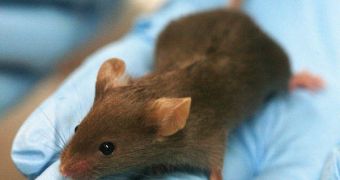Finding sources of stem cells is not exactly easy in most countries, considering the fact that the best research can be conducted using embryonic cells, which are naturally derived from viable human embryos. This, obviously, raises some ethical questions, therefore experts have been searching for alternatives for a long time. A new research concentrating on the power of reprogrammed adult cells has revealed that viable, fertile organisms can be created using only this type of structures. A mouse was created starting from only a few of these cells, and it has turned out better than expected.
The amazing achievement comes from a team of experts led by Qi Zhou, the director of the Beijing National Stem Cell Bank, in China. His study had only two, albeit very grand, goals: to use only reprogrammed cells to create a living, breathing organism, and to demonstrate that these cells were just as effective at doing the job as embryonic stem cells (ESC). In a new paper published in Thursday's issue of the respected scientific journal Nature, and co-authored by Zhou, the team highlights the fact that, while the second assumption still requires further exploration, the first has been successfully attained.
At this point, there are many questions related to reprogrammed, or induced, pluripotent, stem cells (iPS). There is still no established knowledge as to whether these cells can differentiate into any type of tissue that is required, or if they generate a number of tissue types at once. Ultimately, it's still unsure whether they are medically viable, and fit for use in the applications that doctors have in store for them. These uses include regrowing lost limbs and replacement organs, which would make a heart or a kidney from the patient's own cells. This would ensure that there is no risk of rejection in the body.
The accomplishment “gives us hope for future therapeutic interventions,” Shanghai Institute of Medical Genetics Cell Biologist Fanyi Zheng believes. For the new mouse, Zhou and Zheng injected iPS cells into the embryos of mice designed to hold double sets of chromosomes, Wired reports. The original cells inside the embryo were only designed to last for a few days, but, apparently, they provided a sufficient amount of “momentum” for the new additions to trigger their development. The iPS then started differentiating like any other cells would in a normal embryo.
“They have shown that iPS cells can satisfy the most stringent criteria of pluripotency,” Harvard Medical School expert George Daley, who is a stem-cell biologist not involved in the new research, explains. “Here’s another way in which these cells are functionally similar to [ESC], but it’s not to say that they’re identical,” Sean Morrison, from the University of Michigan Center for Stem Cell Biology, adds.

 14 DAY TRIAL //
14 DAY TRIAL //